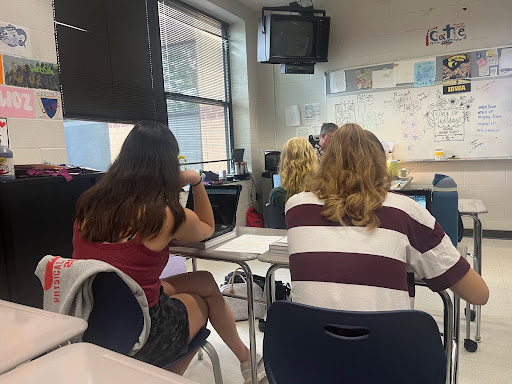Junior year is often the most challenging years for high school students. It’s filled with rigorous testing, extracurricular commitments, and various pressures, many of which students may feel unprepared to face.
“I had a lot of older friends who told me about junior year and how it was just kind of more challenging,” said Gwen Phillips, junior.
This year is especially important for student in their preparation for college. Students typically take more demanding courses, such as Advanced Placement (AP) classes, participate in extracurricular activities, and join numerous honors societies. Outside of academics, many juniors begin exploring colleges, obtain their driver’s licenses, and take on other responsibilities like jobs.
“I struggled with classes and figuring out what I needed to do to prepare for college, like taking AP classes that can earn me college credit later on,” said Alex Tiller, junior.
Tiller’s experience highlights the common difficulties faced by many juniors. Many struggle with balancing academics, extracurriculars, and college prep; all which can be overwhelming. “Procrastination and college preparation were definitely my biggest challenges this year,” said Maia Nguyen, junior.
A key focus of junior year for students planning to go college and preparing for college admissions. Many students study for standardized tests like the ACT and SAT, which assess reading, math, and other academic skills. These tests can be submitted to help students recieve financial aid, and to help better their chances of getting into college.
In addition to testing, juniors often enroll in AP classes offered by their schools. Leesville provides a variety of AP courses available to all sophomores, juniors, and seniors. Juniors can take up to eight AP classes or choose to enroll in college level courses through Wake Tech, which can help them to earn college credits. Both options offer valuable college-level learning experiences that help to strengthen their college applications.
Besides academics, many juniors participate in multiple extracurricular activities which can enhance their college resumes, and allow a space for growth. These extracurriculars often lead students to find what college or major they want to pursue.
“Definitely start looking at colleges during junior year—that’s the most important thing you do. It’s also when you really start thinking about the future because it’s coming up fast,” said Tiller.
The college application process often begins early in the start of students senior year which affects many juniors who are planning to apply to college,and the processes they go through to get to that point.
“Junior year was similar to what I expected, but not completely. There are struggles with hard classes, but also fun moments, like learning to drive,” Tiller added.
Despite its challenges, junior year brings new freedoms and exciting experiences as described by Tiller. Many students begin driving or gain off-campus lunch privileges, providing a sense of independence and enjoyment that can help balance the stress of the year.
While these positive moments offer relief, the challenges of junior year—from increased academic demands to college preparation—remain significant. It’s a year marked by growth, hard work, and important milestones that shape students’ futures.

It makes my day better when I’m listening to good music and drinking a nice coffee.

Leave a Reply